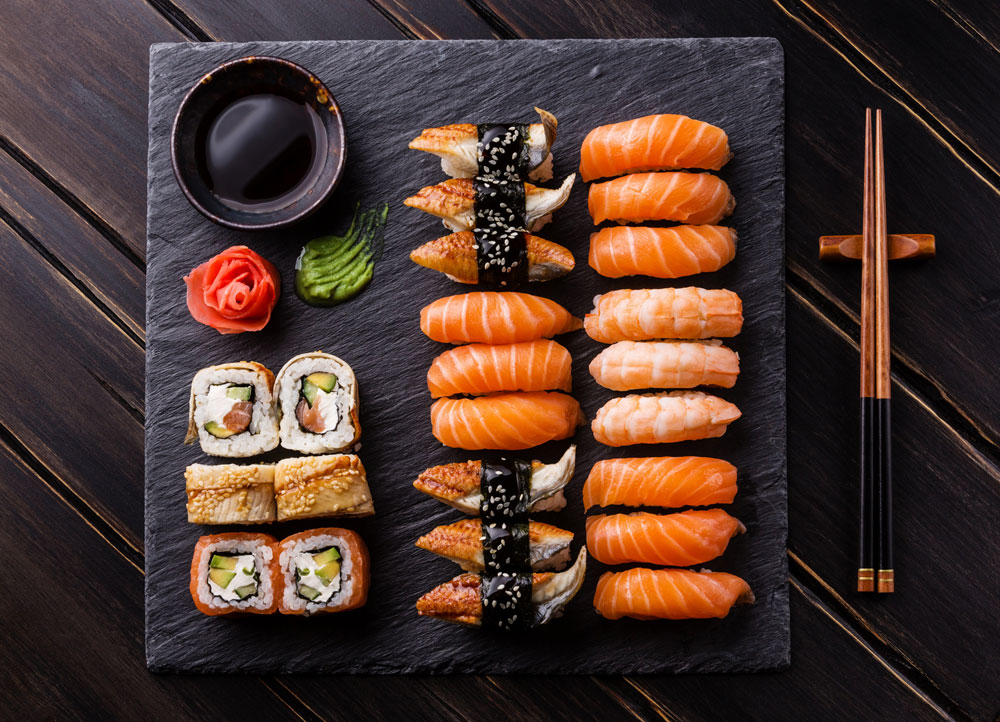JAPANESE CUISINE IN PATTAYA
Under one roof, in Pattaya’s Central Festival Mall, there are plenty of restaurants where you can grill your own food at your table, or go for the conveyor belt sushi places, where you can sit at one spot and wait to pick from the kaiten-zushi or the sushi-go-round.
More than the dining, it is the total experience of sitting at a rotating moat, us the warriors, at the ready, to quickly pick up and impale the platefuls of sushi, nigiri, maki, sashimi, not heeding the bill that will come at the end, but on the palate prowl. There is also the sense of communion with a whole lot of diners whom one has never met before — there for the same purpose, but with varied hunger patterns.
If you would prefer to have a set menu, there are a number of places both in the Central Festival precincts, and in other parts of Pattaya. We rather liked the Yayoi chain, where the service is quick, the quality of a high standard, and the price point very comfortable.
The beginnings of Yayoi go back more than a century. The story given out is that there was a certain Tamijiro Shioi, who trained professionally in France, came back to Japan and started Yayoi Ken in Tokyo. His popularity spread quickly, and his frequent customers even included the Japanese prime minister.
Under his grandson there has been a huge expansion with over 200 outlets already, and the plan is to go up to 500 eateries. What is interesting about this chain is that you can find a meld of Western and Eastern cooking styles in their menus. Thus, we could get a bacon cheese sukiyaki nabe for 179 baht, or a grilled salmon with teriyaki sauce plus spicy karaage for 329 baht. Nabe is a Japanese hot pot dish, and karaage is a Japanese fried chicken that has a crisp texture on the outside and is juicy and tender on the inside.
At another restaurant, you could order a quick meal of prawn tempura (and other veggie tempuras like ladies finger and baby corn) with a miso soup, sticky rice and kimchi, all for 150 baht. One could call this an ichiju-sansai literally meaning “one soup, three sides”. This term refers to a meal consisting of rice and soup accompanied with three dishes (one main dish + two side dishes).
The fun happens in the yakiniku restaurants where you get a Japanese-style barbecue. In a yakiniku restaurant, you can order prepared raw ingredients which are brought to your table. You can then cook this yourself on a grill built into the table, and then dip into some excellent sauces. The most common sauce is made of Japanese soy sauce mixed with mirin (a sweet, tangy rice wine), sugar, garlic, fruit juice and sesame. Try the Izakaya Baku where you can eat at sunken tables done in the Japanese Horigotatsu style.
I am surprised that more people don’t come back from their travels laden with a Japanese dried seafood snack that I freak out on. It is light and quirkily flavourful — Otsumami Nori. Sheets of crispy and crunchy seaweed are a great complement with drinks, or simply to munch on when nibble pangs get you.
Has all this made you famished? Then say it in Japanese onomatopoeic style — pekopeko — or the rumblings of a hungry stomach.
Ijo Desu — that’s all. For now!
Summertime is a tad more bearable when one is in the cerulean seas of Thailand, complete with sunbathing, surfing and building sand castles on the beaches of popular resort destinations like Pattaya.
One can drink from the sweetest of daabs (or the chilled local beers) brought to somnolent deckchairs, where, like a beach bum one lies back all salted up from the sea. To go with the cool drinks are crispy crayfish and crabs to be cracked open and dipped into sweet-and-sour home-made sauces or fiery som tam. These are nothing like the sanitised papaya salads you eat at five-stars. Here you have pounded before you in a mortar and pestle (akin to our hamaan-dista) pods of garlic, roughly diced lemon, dried shrimp, palm sugar, fish sauce, peanuts and crazily hot red chillies, teaming up with freshly-grated papaya that can hit your palate hard.
But we’re on a hunt for Japanese food in Thailand. So, let’s start by moving instead to the milder flavours and the cooler climes of the restaurant scene, as we pick out some of the specialty Japanese eateries that have become a rage with tourists.
DECODING JAPANESE FOOD NAMES
Talking to a group of travellers from the US in Thailand, I found they were still confused about Japanese food terminology. Even here in India, we eat sushi with abandon at banquets and at some of the speciality Japanese restaurants. But how do we define sushi? Sushi is nothing but rice that is vinegared or flavoured and impacted. Su is simply vinegar in Japanese.
Many vegetarians can have maki, which is sushi (particularly the ones with just rice and veggies) wrapped or rolled up in nori seaweed. But sashimi is different, very different. Here you have a choice of many types of raw fish or meat, thinly sliced, the popular fish being tuna and salmon. I like nigiri best because you get finely sliced raw fish atop a little mound of rice.
And then again, what is tempura? A highly refined version of our telebhaja, as you get the most delicately deep-fried shrimps and a host of veggies, including brinjal, done in a light and airy batter. For a teriyaki dish, which is usually broiled or grilled meats and varieties of fish, the sauce is the thing — a finger-licking tasty blend of soy sauce, mirin and honey or brown sugar, which gives the dark and shiny glaze. Teppanyaki cooking basically means the use of a griddle or a flat-surface iron grill-and it’s the drama and the immediacy of seeing your favourite meats and veggies cooked right there which makes teppanyaki cooking so attractive.
And never confuse sukiyaki with teriyaki, as the former is a hot pot dish with meat and veggies cooked in a broth of soy sauce. Also, if you don’t have sweet tastes, then go for shabu-shabu, which is more savoury but is the same kind of hot-pot preparation. Noodle-wise, udon, soba and ramen are some of the popular varieties, varying in thickness and texture.
Let’s go to an ender. Kakigori. With our searing summer still persisting, this shaved-ice dessert in various flavours is the perfect way to finish up.
So there you are — lots of mouthfuls of teaching to explore a cuisine that has become popular the world over. In fact, Tokyo has the most Michelin-starred restaurants in the world.
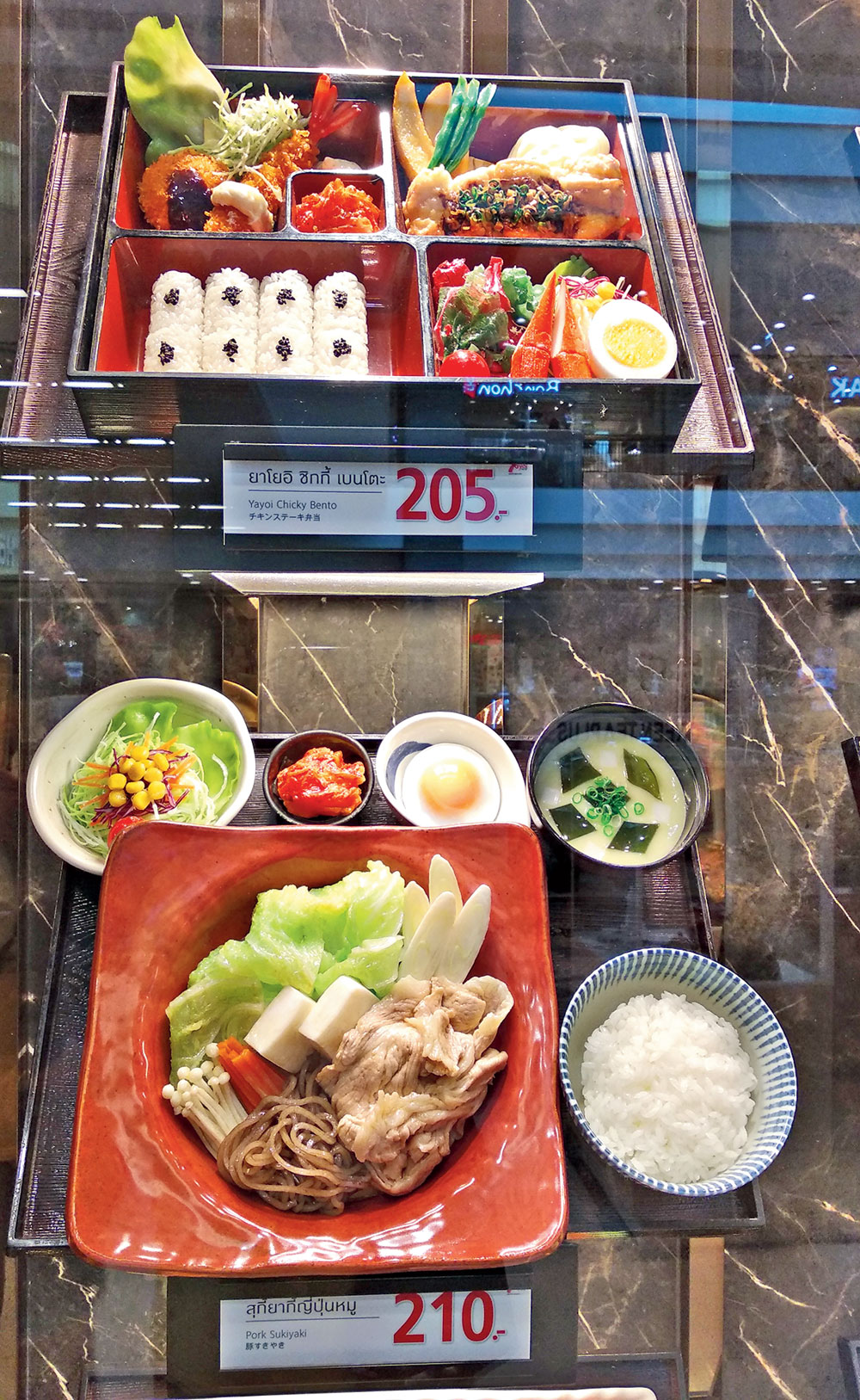
Bento boxes on offer at restaurants in Pattaya Sourced by the Telegraph
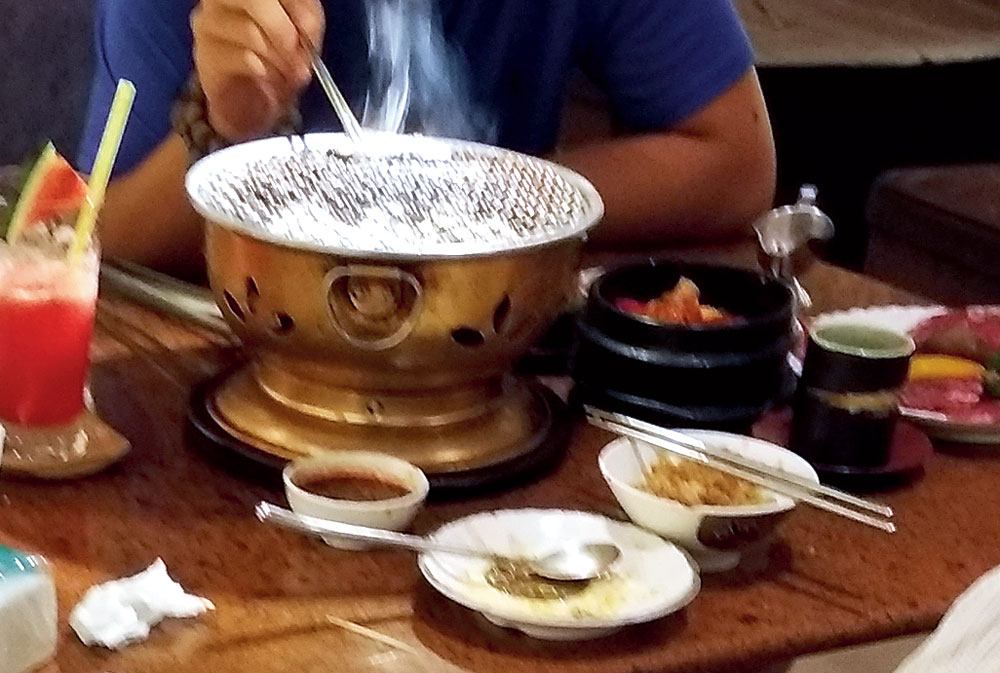
At the Yakiniku restaurants there is a Japanese-style barbecue. Here one can order prepared raw ingredients that are brought to the table and cook them right there Sourced by the Telegraph
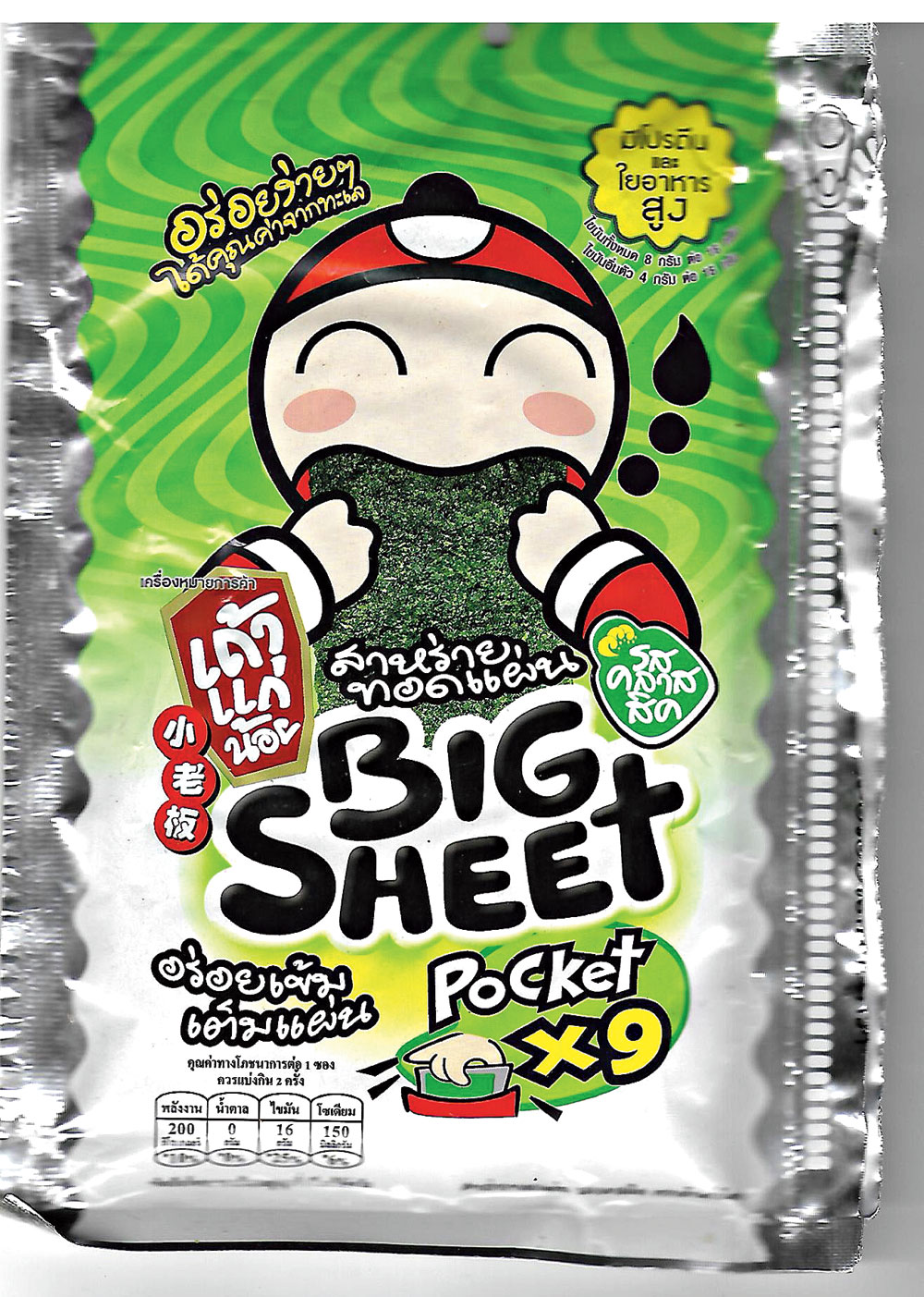
A seaweed snack Sourced by the Telegraph

Grilled salmon steak done Japanese style Sourced by the Telegraph
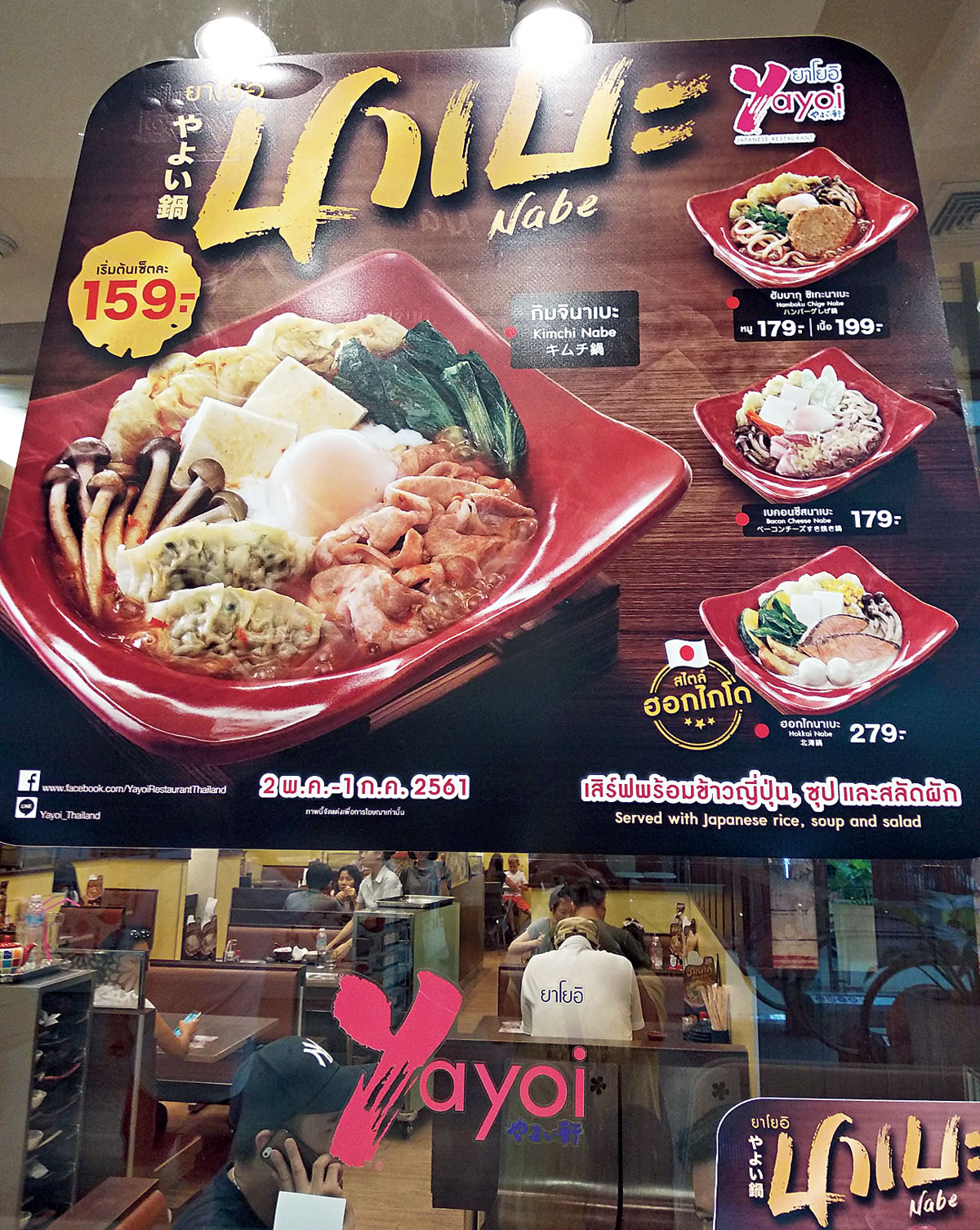
At the Yoyoi chain, the service is quick, standard of food high and the prices extremely pocket-friendly Sourced by the Telegraph
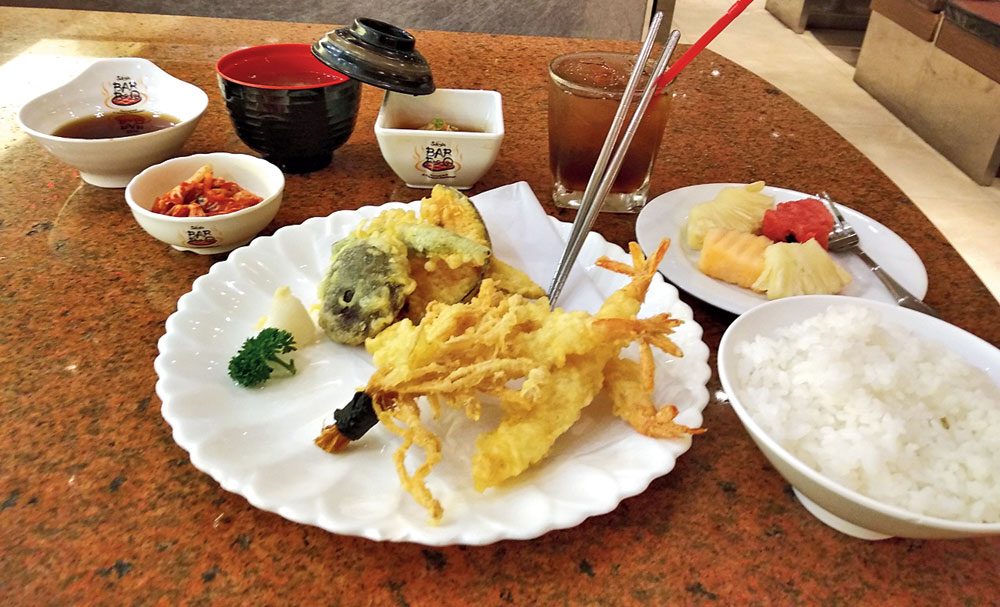
A prawn or vegetable tempura meal, or ichiju sansai, often includes rice and other items as well Sourced by the Telegraph

